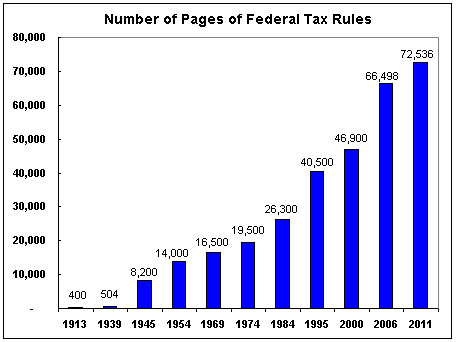The above graph from the Cato Institute demonstrates the growing complexity of the U.S. tax code over the years. After doing my taxes recently and trying to track the ins and outs of the law for my wife's private practice, I can attest to the graph's accuracy.
But then I was reading an interesting editorial in Circulation: Arrhythmia and Electrophysiology by N.A. Mark Estes III, MD and Jonathan Weinstock, MD that reviewed an article by Roos, et al in the same journal that found only 27 of 698 guideline recommendations from the European Society of Cardiology (median 1.2% per guideline [IQR 0.95% to 3.7%]) were correctly referenced as Class I or III Level of Evidence A recommendations, calling into question the accuracy of guideline recommendations. In their editorial, Estes and Weinstock defended the guideline process but also mentioned the following shocking statistic:
There have been 2413 guidelines published by 267 organizations over the last 2 decades.To bolster their point, they referenced the government's own website designed to tract these guidelines.
So I checked the number of guidelines so far just for cardiovascular diseases: 457 and counting.
Given this, one thing is becoming abundantly clear:
... doctors will soon be behaving less like doctors and more like tax accountants.
-Wes
References:
Estes NA M, Weinstock J. Guidelines for Cardiac Arrhythmias
Practice Makes Progress Circulation: Arrhythmia and Electrophysiology. 2011; 4: 119-122.
Roos M, Brodbeck J, Sarkozy A, Chierchia GB, De Asmundis C, Brugada P. Critical Analysis of the Scientific Evidence Behind International Guidelines Related to Cardiac Arrhythmias Circulation: Arrhythmia and Electrophysiology. 2011; 4: 202-210.

No comments:
Post a Comment